In recent months, rumors about Apple working on a top-secret headset project have reached a fever pitch. But at the same time, the chatter has become increasingly convoluted — Apple is reportedly planning to use mixed reality (MR) rather than solely augmented reality (AR) or VR, but how exactly will that work? What will the device look like? And what features will it have?
That is where this roundup comes in. We have combed through the rumors and reports to find all the latest key information, then combined it in one convenient location. Here is everything we know about Apple’s upcoming mixed-reality headset, including price, features, and more.
Price and release date
As the months have rolled on, Apple’s headset has never seemed to move closer over the horizon. That’s probably to be expected with a product as ambitious as a mixed-reality headset, but it means we shouldn’t expect it any time soon.
Apple’s Worldwide Developers Conference (WWDC) in June 2022 was offered up by many leakers and analysts as a possible announcement date, if not with a full-blown product reveal, then perhaps a sneak peek. Yet WWDC came and went with not so much as a slight hint from Apple as to the headset’s existence.
However, there are hints of its existence in Apple’s software. Bloomberg reporter Mark Gurman, for example, noted in his Power On newsletter in April 2022 that beta versions of the upcoming iOS 16 operating system were “chock-full of references to the headset and its interactions with the iPhone.” That suggests the headset is not a million miles away from a release date.
Gurman reported in May 2022 that Apple had shown a prototype of the device to the company board and that it was targeting a launch in late 2022 or early 2023. That is later than Gurman’s earlier predictions, but the impact of the coronavirus and lockdowns in Apple’s supply chain has probably pushed things back. In fact, Gurman has reiterated the 2023 date in a newsletter from August 2022, suggesting Apple is crystallizing its plans around this date.
(1/2)
I believe Apple's AR/MR headset shipping date will postpone to 2Q23 (vs. 1Q23 of market consensus) because Shanghai lockdown interrupts the development. As expected, there were no clues for AR/MR headset at WWDC 2022. Here is my prediction for Apple AR/MR headset schedule.— 郭明錤 (Ming-Chi Kuo) (@mingchikuo) June 7, 2022
Apple analyst Ming-Chi Kuo has also suggested a January 2023 announcement date. In a series of tweets, Kuo claimed the headset’s shipping date would be postponed to the second quarter of 2023, with a media event being held in January 2023 to unveil the device. Kuo said a development toolkit could make its way to interested parties two to four weeks after the event, with pre-orders happening in the second quarter of 2023. The headset would then hit store shelves some time before WWDC 2023.
DigiTimes, meanwhile, has suggested a slightly later date of March 2023 for the headset to enter production. Regardless of whether Kuo’s January or DigiTimes’ March prediction is correct, it seems an early 2023 time frame is starting to come together.
All that said, these dates are for the first headset Apple launches. The company is rumored to be working on multiple devices, though, including a more affordable version that will follow the initial product. After that, Apple is expected to launch a set of AR glasses that look more innocuous than a full-on headset. There’s no release date for those yet, though.
As for the price, The Information has offered details, claiming it would cost $3,000. That would put it in the company of Microsoft’s $3,500 HoloLens 2, but with a price that high, it would likely be restricted to industry use. That seems a little out of character for Apple. However, a January 2022 report from Display Supply Chain Consultants (DSCC) also claimed the price tag would be “several thousand dollars” and that the high price would mean the first-generation model would be aimed at professionals and developers. So that high price might have some justification.
Initially, Kuo suggested a much lower price of $1,000. This puts the headset back into consumer territory (albeit at the top end) and is more in line with what we would expect from Apple: expensive but still considered mainstream and consumer-focused. However, in August 2022, Kuo then upped that prediction to $2,000, and Mark Gurman has cited a similar figure.
What’s in a name?
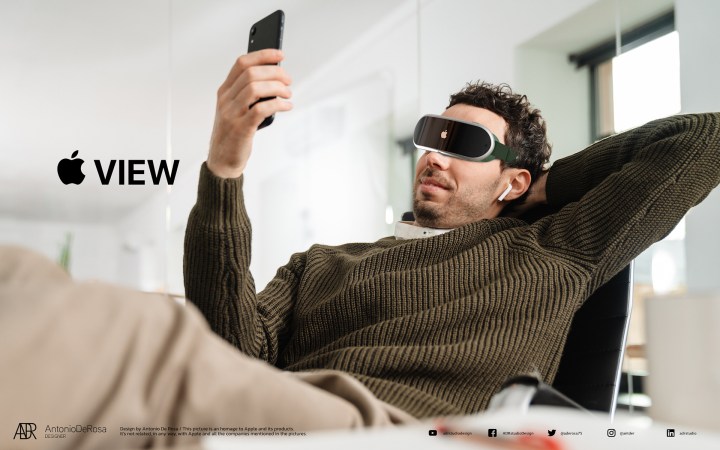
Ever since the first Apple headset rumors started to leak onto the internet, people have been speculating about what the device might be called. Some early contenders have come and gone, but an answer appears to be getting closer.
The first widely promoted name was Apple Glass. This was mooted by leaker Jon Prosser in a YouTube video from mid-2020 after he claimed to have seen a prototype of the device. However, this name was shot down by reporter Mark Gurman, who expressed his doubt that Apple would name a product after the flop that was Google Glass. Fair point.
Gurman himself proposed a number of options Apple might go with, including Apple Vision, Apple Reality, Apple Sight, and Apple Lens.
Since then, Gurman has doubled down on the Apple Reality name. In late August, Apple filed trademarks for the names “Reality Pro,” “Reality One,” and “Reality Processor.” Gurman believes Reality Pro is the name Apple will use for its first headset, and that name indicates it will be a high-end device, perhaps one to rival Meta’s upcoming Quest Pro.
After that, Gurman believes a more affordable headset will launch without a few of the headline features of the Reality Pro. That pared-back device might take the name Reality One. Apple has the form of using the “One” name, such as with the Apple One subscription service.
We don’t yet have a name for the AR glasses Apple is supposedly working on, but we’re sure a name will leak out soon enough. Perhaps it already has — Apple Lens seems like a strong contender to us.
A wraparound design and tons of cameras
What can you expect Apple’s mixed-reality headset to look like? Well, seeing as it combines AR and VR, chances are it will be a full wraparound set to keep you immersed while using its virtual reality features. Anything that lets you see your surroundings — like Microsoft’s HoloLens 2 or the Magic Leap 1 — would take you out of the virtual world you are experiencing. Rumors also suggest Apple’s device will be totally wireless to give you the freedom to move without being yanked back by cables — another immersion-breaker.
Then there is the augmented reality side. To make this happen, the headset is going to require cameras to capture the outside world and feed it back to you. According to a report from The Information in early 2021, there will be up to a dozen cameras and lidar sensors mounted on the device, the latter of which Apple has already incorporated into devices like the iPhone 12 Pro and iPad Pro to help with augmented reality processing. However, a newer report from The Information in May 2022 asserted that there would actually be 14 cameras on the device — something that the outlet claimed again in an October 2022 report, which added that the headset would have two downward-facing cameras to record a user’s legs.
The May report from The Information also contained an interesting tidbit on the headset’s body: it could use straps that look awfully like those on the Apple Watch Sport Band. It is not the first time we have seen one Apple device take design cues from another — the AirPods Max headphones borrow the HomePod Mini’s fabric mesh and the Apple Watch’s Digital Crown, for example. In October 2022, The Information claimed the headset would resemble “a pair of ski goggles” and be made primarily from “mesh fabrics, aluminum, and glass.” The report added that the headset conceals its cameras noticeably better than the Meta Quest Pro.
Kuo, however, contends there will be 15 cameras — eight for AR, one for environmental detection, and six for “innovative biometrics.” Kuo backed this up with a further report in April that reiterated the claim of 15 cameras. It is possible both versions exist as prototypes, with Apple to decide which to settle on in the future. Whichever claim ends up being correct, it is evident Apple is taking the camera situation on its headset seriously.
Light as a feather
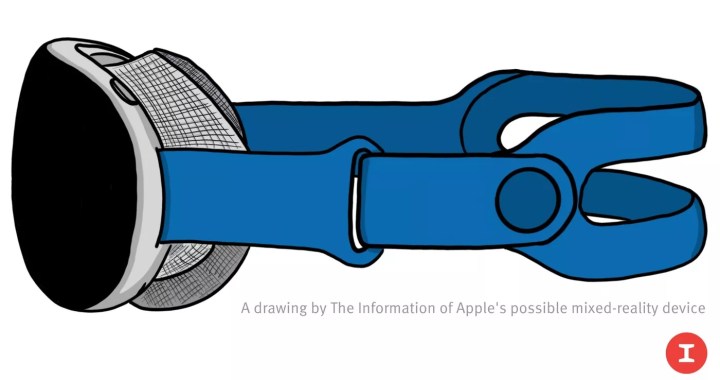
What about the actual body of the device? This is an interesting one, as it could be a real differentiator — and advantage — for Apple. A report from Kuo in March 2021 claimed the entire headset could weigh as little as 150 grams (0.33 pounds), which is about half the weight of many rival devices. The $1,000 Valve Index VR headset would weigh more than five times what Apple’s headset weighs if Kuo is correct, and it would also weigh significantly less than the 722g Meta Quest Pro. Aiding that low-bulk goal would be the use of lightweight fabric instead of heavy plastic in the frame.
The Information claimed in May 2022 that Apple’s former design guru Jony Ive has been brought in as a consultant for the headset. Given Ive’s penchant for incredibly thin and light devices, we wouldn’t be surprised if the rumors that the headset will be super-light prove to be correct.
An 8K feast for your eyes

It is not just the exterior of Apple’s headset that sounds promising, as the interior could come with some eye-opening features, too — quite literally in the case of the display resolution. It is rumored to be a whopping 8K per eye, giving an unprecedented level of detail. For comparison, the HTC Vive Cosmos Elite comes with a 1440 x 1700 resolution per eye. What’s more, according to The Elec, Apple has increased its pixels-per-inch goal for each eyepiece, up from 2,800 pixels per inch to a huge 3,500 ppi. That could bring unrivaled clarity to the headset’s creations.
Alternatively, a January 2022 report from industry analysts Display Supply Chain Consultants (DSCC) goes against that idea, claiming that the front-facing lenses could have a 4000 x 4000 resolution. The report adds other enticing details, including that the front panels will be micro-LED displays, while Apple will add a third panel for peripheral vision. This will be an AMOLED display and run at a lower resolution than the micro-LED screens, which could help create an immersive, all-encompassing experience that keeps your peripheral vision slightly blurred to help you focus on what’s ahead of you.
I didn’t cover this in my original story about the Apple Reality Pro headset trademarks, but Apple has registered for an additional name: Optica. I’d imagine this is some feature surrounding the device’s interchangeable prescription optics system. https://t.co/ZUcSwjFNXa
— Mark Gurman (@markgurman) September 4, 2022
Apple is said to be gunning for high-quality visuals in other ways, with Kuo alleging that the headset might come with iris recognition based on the tech his sources tell him is in the device (such as the cameras used for “innovative biometrics” mentioned earlier). Iris recognition could be used to authenticate you for Apple Pay, says Kuo, or to unlock your accounts, enabling you to perform these tasks without having to take off the headset to enter a password on your iPhone.
Kuo has also suggested in a tweet that the headset might smoothly switch between AR and VR modes, creating an “innovative experience” that could become “one of [the] key selling points of Apple’s headset.” That could give it a distinct advantage over rival headsets that are limited to either AR or VR or cannot switch as seamlessly between them.
We mentioned earlier how Apple has been trademarking various names relating to its headset. One more name claimed by the company is “Optica,” which Mark Gurman speculates could refer to “some feature surrounding the device’s interchangeable prescription optics system.” That could potentially mean the device will be compatible with prescription lenses; since we doubt a pair of glasses could fit under the headset, that’s great news for anyone who uses eyewear daily.
Powered by an Apple Silicon chip
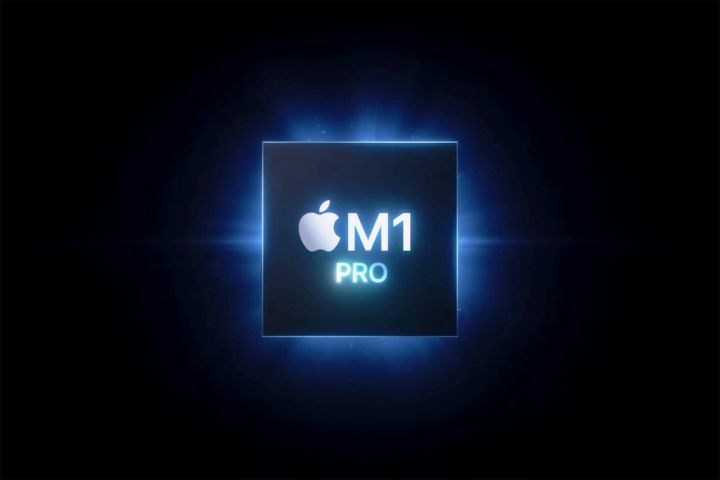
One thing we have not seen much news on is the refresh rate and field of view that will be used in the headset’s displays. The refresh rate will need to be high enough that lag and motion sickness are kept to an absolute minimum, and rival headsets typically aim for 90Hz or higher. We will have to wait and see what Apple opts for here.
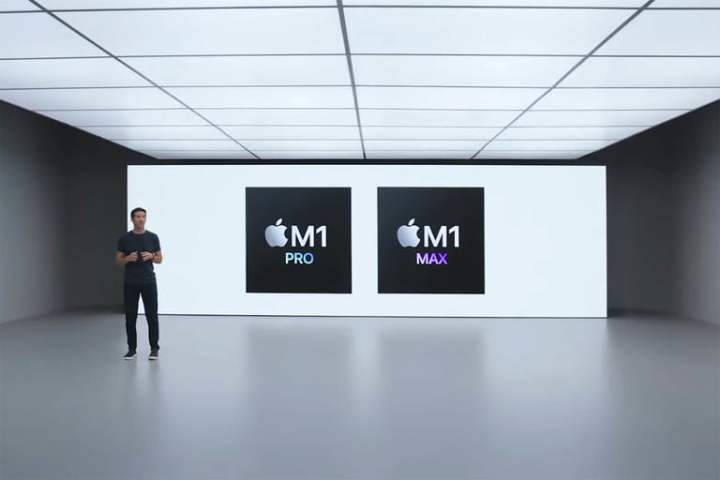
There is another possibility raised by Apple analyst Ming-Chi Kuo: That the headset will actually be powered by two chips, not just one. One would be made on a 4-nanometer process and another on a 5-nanometer process, and Kuo says the former would offer the main computing power, while the latter would manage the device’s sensors. The combined power output would require one of Apple’s 96W adapters, Kuo believes — the same adapter as the one that juices up the MacBook Pro, which could be a potential indicator of the headset’s power.
The idea of two chips powering the headset was backed up by reporter Mark Gurman in a January newsletter, where he claimed one of the two chips would be “on par with the M1 Pro in the MacBook Pro.” With both Kuo and Gurman on board, the idea of an Apple headset wielding two beefy chips seems to be gaining ground.
Kuo has also claimed that the headset will boast Wi-Fi 6E rather than the Wi-Fi 6 found in the current iPhone 13 lineup. This opens up a new 6GHz band, granting you lower latency and faster data rates. Considering the demanding nature of mixed-reality content, we think this claim makes a lot of sense.
However, despite all the power the headset might be loaded up with, sources The Information has spoken to claim the device will not focus on gaming (something the sources have criticized). According to The Information’s report, gaming is “a category of software that appeals to early adopters, which was important to the success of the iPhone and has been a big priority for Meta’s VR group,” so making a headset that does not put much of a focus on gaming might seem odd. Then again, given how Apple has never really fully embraced gaming with its other devices, it’s perhaps not entirely surprising.
Hand-tracking and eye-tracking
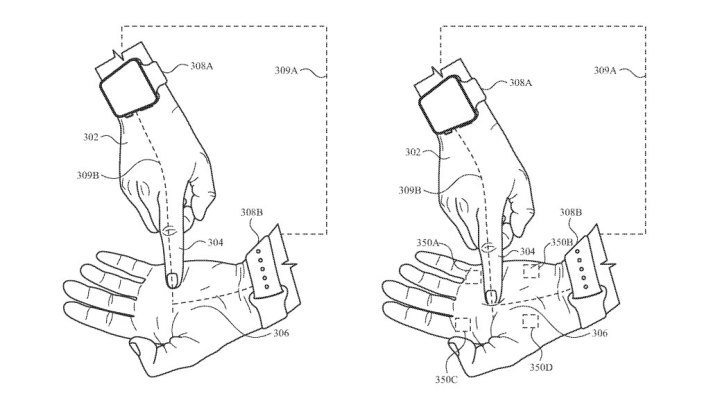
The headset’s vast camera array could allow for eye- and hand-tracking features. Apple has already patented ideas for these control methods in the past, both for the Mac and for a mixed-reality headset. Adding to that, The Information states Apple is aiming to use hand-tracking and a “clothespin-like finger clip” as input devices and is not looking to include gaming controllers with the headset. That idea has been backed up by a recent Apple patent that describes finger-mounted devices that could detect movement and provide haptic feedback. With that in mind, do not be surprised if Apple promotes the hand-tracking capabilities of its MR headset.
There’s another possibility. Apple recently uncovered a patent filed by the Cupertino giant that outlines how a pair of Apple Watches — one worn on each wrist — could be used to enable gesture controls on the headset. With two Apple Watches, a user could potentially use the palm of one hand as a trackpad of sorts and a finger on the other hand as a mouse, letting you interact with your virtual world. This being just a patent, though, there’s no guarantee Apple is doing anything other than exploring ideas here — but it’s still intriguing.
Ultimately, though, we think this system is unlikely to be the one Apple goes for, at least at first. A single Apple Watch is not a cheap purchase, and buying two could add several hundred dollars to an already-expensive headset. There’s been very little to indicate that Apple is working on controllers for its headset, so we’re expecting the first-generation model will use its onboard cameras for gesture controls with your hands.
What seems more certain is the presence of eye-tracking capabilities, and a report from The Information in October 2022 added further details on this. Citing two anonymous individuals who apparently used to work on the device, the report states that eye-tracking would allow users to log in to accounts and make payments, with the eye verification allowing multiple people to use the same headset. Tracking users’ vision would also let the headset reduce graphical fidelity in peripheral vision, thus saving battery life.
An outward-facing display would show the user’s facial expressions to other people, but this would also save battery life by having a low refresh rate, according to The Information.
What about the operating system?
With all these advanced features reportedly in the works, Apple’s headset is going to need a powerful operating system to bring everything together. So far, details are thin on the ground, but there are a few hints.
For one thing, a name has been thrown around for some time. As we mentioned at the start of this article, Mark Gurman has commented it could be called “rOS,” with the “r” being short for “reality.” Since then, a number of tweets have surfaced apparently revealing the name “realityOS” in Apple’s code. Given Apple’s propensity to use full words in its OS naming schemes — think WatchOS, iPadOS, and MacOS — realityOS could be a good bet for the final name of the system.
Looks like #Apple just accidentally confirmed #RealityOS. 🥽
Whoops!https://t.co/IEowqdVcf2 pic.twitter.com/LsNRRalGld
— matthewdavis.eth (@IAmMatthewDavis) February 9, 2022
In a tweet from early February, iOS developer Matthew Davis revealed a seemingly official Apple GitHub page which apparently accidentally revealed the name realityOS. Some of the comments in the code seem to make reference to iOS executables using realityOS libraries, which could hint at some form of interactivity between the two operating systems.
Other than that, few other details have leaked out about realityOS. With a launch date for the headset edging ever closer, we expect to find out more in the coming weeks and months.
Apple mixed-reality headset: Our wish list
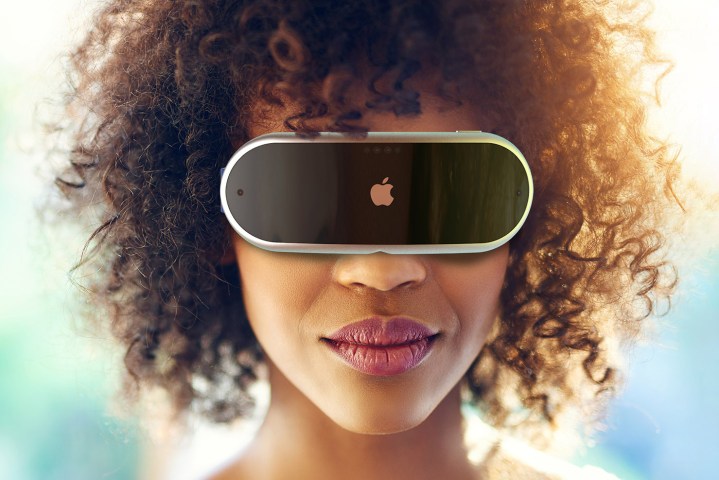
It already looks like Apple is outfitting its headset with a ton of great features, but there are still a few extras we would love to see. At the top of the list is great battery life — after all, what is the point of having an excellent device to play with if it dies after a few minutes? Fortunately, the processor choice spells good news in this department, as Apple’s custom chip has led to incredible battery life in its MacBooks. That might be countered by the super-high resolution the headset is apparently going to use, but we have our fingers crossed.
The word is that Apple is developing a special operating system dubbed rOS (realityOS?) that will drive the headset. Apps and games will need to run on this system, but we are hoping that, due to the common Apple Silicon architecture in both the headset and Apple’s other devices, some degree of cross-compatibility will be available.
For example, it would be great if the headset can recognize if you are playing a game on your Apple TV or your Mac, for example, and then mirror the content onto the headset with added mixed-reality goodness (provided the game is VR-compatible, of course). It would be a shame if Apple limits the headset to only work with rOS-compatible games and apps, as developers might be put off if they must build apps from scratch for the new operating system.
One final request concerns the headset’s control method. We do not know whether the device will come with handheld controllers or will rely entirely on gestures. If it is the former, one thing Apple really needs to incorporate is haptic feedback. This is already included to great effect in every MacBook and the Apple Watch, so Apple knows how to make the tech work. Gentle taps that are built into apps and games would be a great addition that does not break immersion.
We might get to see some of these features in action, if not in the first Apple VR headset, then in the second-generation model. Ming-Chi Kuo claimed in late 2021 that Apple was working on a second-generation VR headset that would be lighter and faster than the original model, with better battery life too. The Elec followed that up in June 2022 by saying that LG Display was hoping to supply the main OLED panels for the second-generation device, adding further evidence that Apple is already thinking ahead to its follow-up headset.
Editors’ Recommendations
Credit: Source link


Comments are closed.